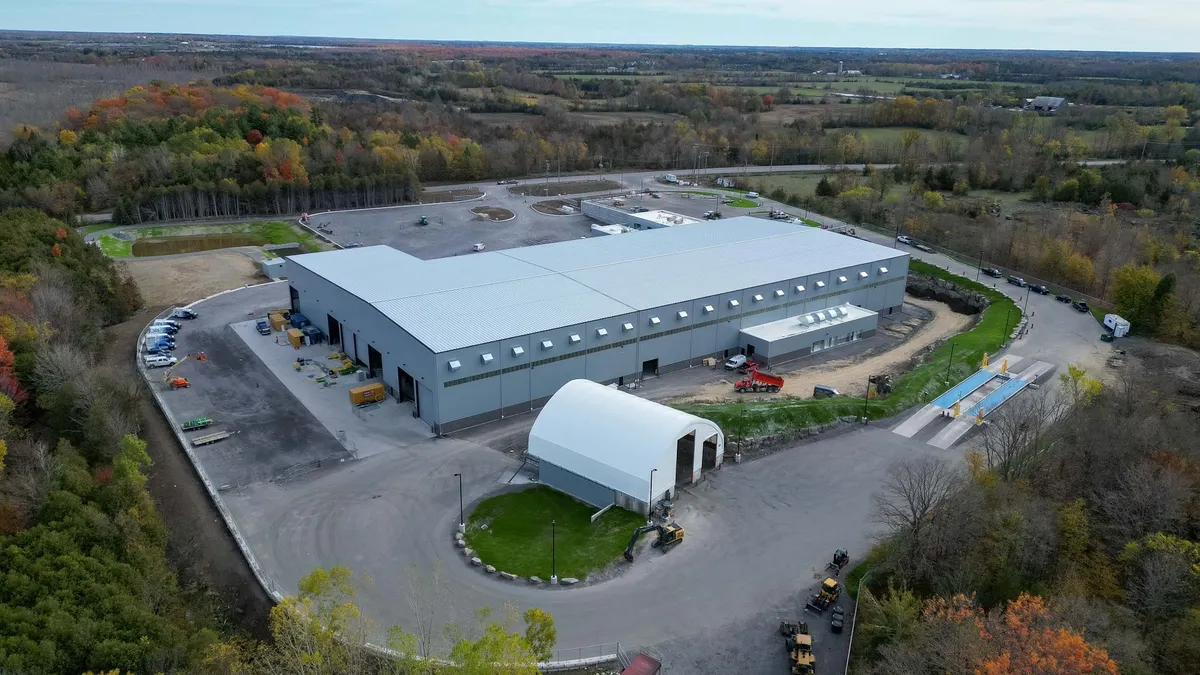Halfway into New York's 20-year Solid Waste Management Plan (SWMP), the city's Department of Sanitation (DSNY) has seen a 19% reduction in truck mileage, due in part to an ongoing transition toward rail and marine transfer stations, while also entering into long-term export contracts with increasingly higher costs. This analysis comes from a new report by the city's Independent Budget Office (IBO).
The report also found that the city's network of marine transfer stations is now projected to cost more than $910 million and is at risk of becoming obsolete if the city can achieve its "zero waste" goals unless redesigned. The stations, the majority of which have yet to open due to construction and permitting delays, are not designed to handle recyclables or organics.
The SWMP diversion goals and infrastructure needs were determined with the assumption that overall waste volumes would increase with population growth, though the reverse has happened due to now well-known packaging and consumption trends. DSNY collections in 2015 were nearly 20% below SWMP projections and 11% less than 2006 when the plan began. This has meant less recyclable material is available for capture than expected, causing relatively flat diversion rates and higher per ton costs for recyclables than refuse when collection is factored in.
DSNY collections in 2015 were nearly 20% below SWMP projections and 11% less than 2006 when the plan began.

Debate around the 2006 SWMP is remembered as particularly controversial, fueled by community anger and fiscal concerns. The new marine/rail transfer system was meant to solve inefficiencies and environmental justice issues stemming from a slew of private transfer stations that opened as the Fresh Kills Landfill began limiting tonnage in the late 1990s and finally closed in 2001. While many of those environmental concerns persist, DSNY expects to continue reducing its reliance on private transfer stations as more MTS facilities come online and has already seen progress thanks to new rail facilities. Though as a previous IBO report pointed out this year the export costs for this overall system are projected to reach $420 million per year by 2021.
In addition to construction expenses, the IBO report points to long-term contracts as another cost factor. During 2016, the average cost for refuse sent to landfills under long-term contracts was $130 per ton as compared to $85 per ton for short-term contracts. The report showed the average cost per ton for waste-to-energy facilities was $81 per ton. While the report cited about 12% of the city's refuse going to WTE, DSNY previously told Waste Dive that number was closer to 25% and will increase once another MTS comes online which is part of a Covanta contract.
The average cost for processing metal, glass and plastics through a long-term contract with Sims Municipal Recycling was $75 per ton for the same period. Success on the recycling side is portrayed as more mixed by the report. Capture rates have gone up, and the percentage of most material types in the waste stream has gone down, but diversion rates haven't reached projected levels. The SWMP had originally called for a 28% diversion rate by 2015, though that was later scaled back by a city council law. The report cites DSNY's most recent full year diversion rate as 16%. When organics are included that number was 16.9%. The IBO report author confirmed to Waste Dive that organics weren't part of this analysis because the program is still not citywide.
All of these targets were set before the 2015 city plan that established a goal of achieving "zero waste" by 2030. The fine print of that policy is to reduce the amount of waste sent to landfills by 90%. To make this happen DSNY has been expanding organics collection and processing, aims to switch to single-stream by 2020 and is also pursuing various programs to encourage reuse or reduction. The report is optimistic about the potential for these programs to increase diversion and "upend the current status quo where refuse tonnage is vastly greater than recycling tonnage."
Though that still leaves the underlying question of what DSNY would do with this very expensive network of marine transfer stations if the scales do eventually tip and refuse tonnage shrinks. Potential ideas include converting the stations to accept recyclables or organics, or eventually accepting commercial waste, though these ideas raise their own logistical, permitting and cost challenges that would have to be addressed. When asked for reaction to IBO's analysis that changes might be needed to keep the MTS network viable for new uses, DSNY said it was "pleased" with the report and provided the following response.
"In its balanced assessment, the IBO acknowledges that the SWMP has clearly made the city more equitable, with fewer neighborhoods bearing the overwhelming burden of waste transfer stations. It also notes that some visionary goals from 10 years ago have not been met. But who then knew there’d be mobile devices significantly reduce the amount of newspaper that had been projected to be in our waste and recycling stream," wrote Kathy Dawkins, director of public affairs, in an emailed statement.
The other alternative is that the city could see more incremental progress on its diversion efforts, while still continuing to export large amounts of refuse through the system of contracts and infrastructure that has been assembled. This current SWMP is in effect through October 2025, by which time a new one will be required by state law. At that point every MTS is projected to be open with many years left on their accompanying export contracts. With a new mayoral administration in place by then, facing yet unknown economic factors, New York could either be well on its way to achieving "zero waste" status by 2030 or choose to stick with the status quo.


















